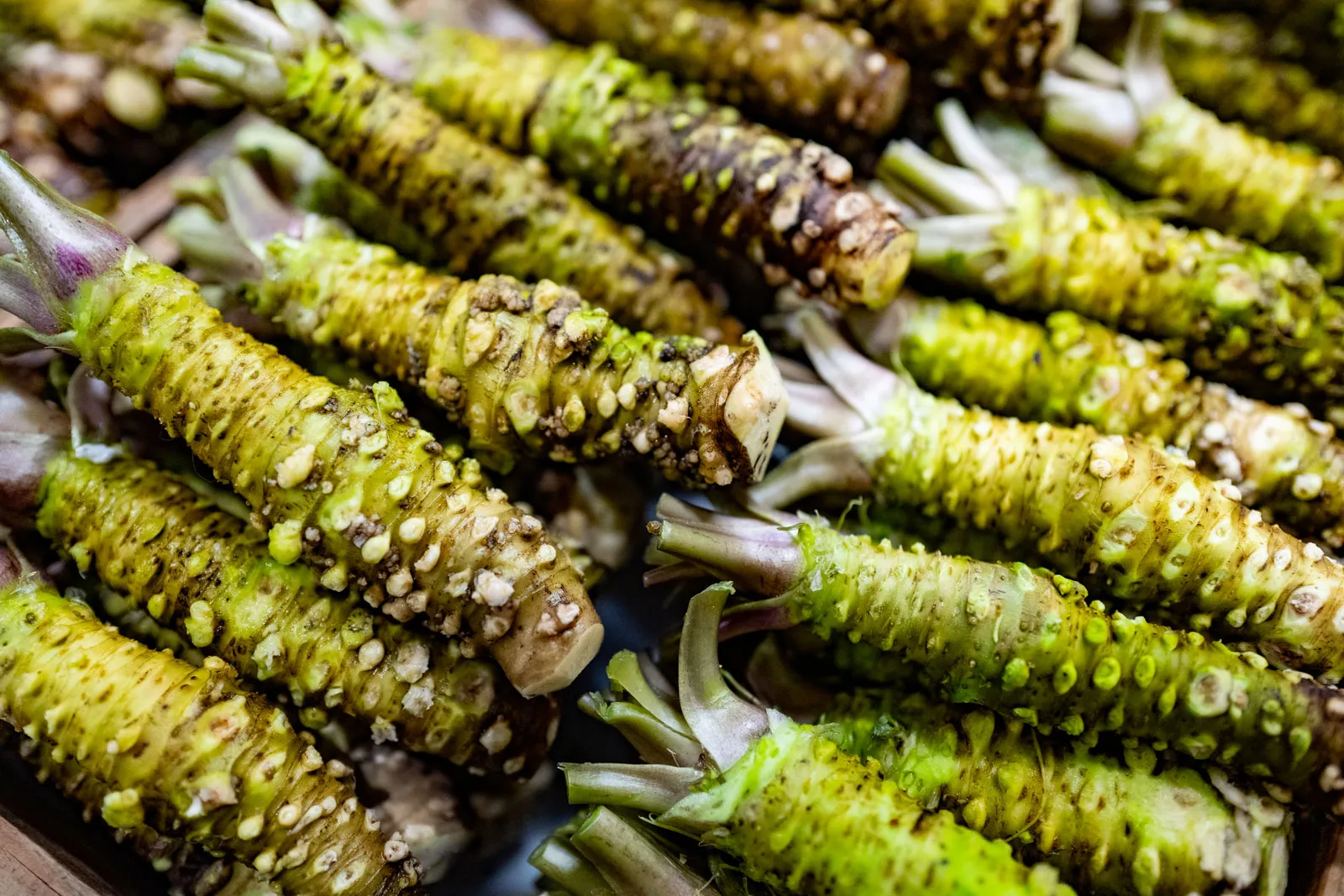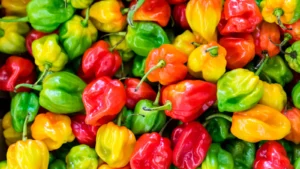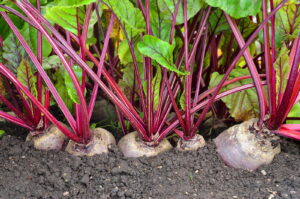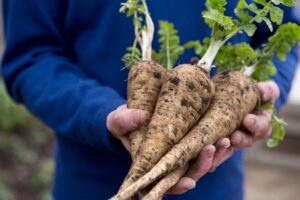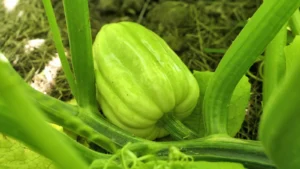How to Grow Wasabi: Complete Guide for Home Gardeners
Wasabi (Wasabia japonica), often called Japanese horseradish, is one of the most challenging yet rewarding culinary herbs to grow at home. While most Americans know wasabi as the fiery green paste served alongside sushi, authentic wasabi is a rare delicacy even in Japan. With proper knowledge and techniques, you can grow this prized herb in your own garden or home. This guide will walk you through everything you need to know about cultivating wasabi in different environments.
What Is Wasabi?
Wasabi is a member of the Brassicaceae family, related to horseradish, mustard, and cabbage. The plant features heart-shaped leaves and grows wild along mountain stream beds in Japan. What we value most in wasabi is its rhizome (stem), which is grated fresh to release its distinctive spicy flavor.
Authentic wasabi has a complex flavor profile—a sharp, clean heat that dissipates quickly, unlike the lingering burn of chili peppers. Unfortunately, most “wasabi” served in restaurants outside Japan is actually a mixture of horseradish, mustard, and food coloring, as real wasabi is expensive and difficult to source.
Why Grow Your Own Wasabi?
Growing your own wasabi offers several advantages:
- Access to authentic wasabi flavor that can’t be found in most stores
- A unique addition to your culinary herb garden
- The satisfaction of cultivating one of the world’s most challenging edible plants
- Potential market opportunity, as fresh wasabi commands high prices in the US market
According to the USDA Agricultural Research Service, wasabi can be successfully grown in specific regions of the United States, particularly in the Pacific Northwest, where the climate resembles its native Japanese habitat.
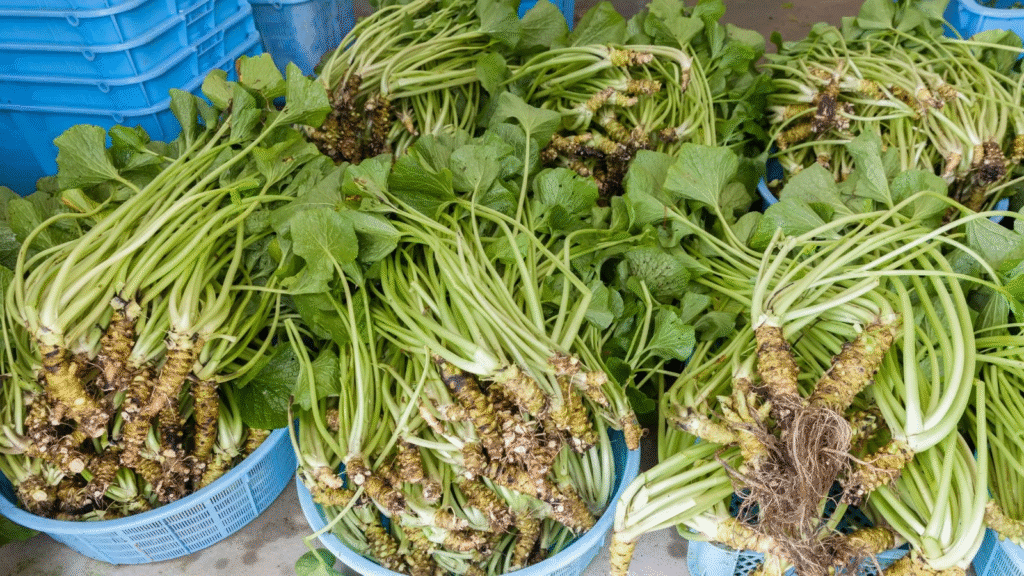
Growing Requirements for Wasabi
Before diving into specific growing methods, it’s essential to understand wasabi’s unique requirements:
| Growing Factor | Optimal Conditions for Wasabi |
|---|---|
| Light | 70-80% shade (avoid direct sunlight) |
| Temperature | 50-60°F (10-15°C) |
| Humidity | 70-80% relative humidity |
| Water | Clean, flowing or highly oxygenated water |
| Soil pH | 6-7 (slightly acidic to neutral) |
| Growing Time | 18-24 months to harvest |
| USDA Hardiness Zones | 7-9 (can be grown in other zones with accommodations) |
The most challenging aspect of growing wasabi is maintaining these specific conditions, particularly the cool temperatures and high humidity. Wasabi naturally grows along mountain streams where these conditions occur naturally.
How to Grow Wasabi in Your Garden
If you live in a region with a cool, humid climate (particularly the Pacific Northwest, parts of the Northeast, or Appalachian regions), you may be able to grow wasabi directly in your garden.
Selecting the Right Location
Choose a spot in your garden that:
- Receives dappled sunlight or is fully shaded (north-facing slopes work well)
- Has good drainage but remains consistently moist
- Is protected from hot summer temperatures and cold winter winds
Preparing the Soil
- Test your soil pH and adjust to between 6.0 and 7.0 if necessary
- Incorporate plenty of organic matter like leaf mold, well-rotted compost, or peat moss
- Create raised beds if your native soil drains poorly
- Consider creating a recirculating water system for optimal results
Planting Wasabi Starts
While wasabi can be grown from seed, starting with wasabi “starts” (small plants or rhizome sections with visible growth points) is much more reliable.
- Space plants 12-18 inches apart
- Plant so the crown of the rhizome sits just above soil level
- Water thoroughly after planting
- Apply a 2-inch layer of mulch to retain moisture
Ongoing Care
- Keep soil consistently moist but not waterlogged
- Fertilize lightly with a balanced organic fertilizer every 2-3 months
- Remove any yellow or diseased leaves promptly
- Protect from extreme temperatures with shade cloth in summer and cold frames or mulch in winter
Growing Wasabi in Containers
Container growing gives you better control over wasabi’s demanding growing conditions and is ideal if you live outside the optimal climate zones.
Choosing the Right Container
- Select containers at least 12 inches deep and wide
- Ensure adequate drainage holes
- Consider self-watering containers to maintain consistent moisture
Container Soil Mix
Create a well-draining but moisture-retentive mix:
- 1 part garden soil or potting mix
- 1 part perlite or pumice
- 1 part coconut coir or sphagnum moss
- 1 part well-decomposed compost
Container Care
- Place containers in a shaded area or north-facing window if indoors
- Keep soil consistently moist
- Consider creating a humidity tray by placing the container on a tray of pebbles with water
- Move containers to cooler locations during summer heat
- Protect from freezing temperatures in winter
Growing Wasabi Indoors
Growing wasabi completely indoors presents challenges but is possible with careful attention to its needs.
Creating the Right Indoor Environment
- Choose a cool room with temperatures between 50-65°F (10-18°C)
- Place near a north-facing window for indirect light
- Use grow lights if natural light is insufficient, keeping them 12-18 inches from plants
- Maintain high humidity with humidifiers, misting, or humidity trays
- Consider a small recirculating water system for optimal growth
Indoor Hydroponic Systems
Many successful indoor wasabi growers use semi-hydroponic methods:
- Set up a container with a water pump to create gentle water movement
- Use expanded clay pellets or similar medium to support plants
- Ensure water is well-oxygenated and cool
- Change water weekly to prevent stagnation
- Add diluted hydroponic nutrients formulated for leafy greens
The National Agricultural Library has resources on hydroponic growing methods that can be adapted for wasabi cultivation.
Growing Wasabi from Seed
Starting wasabi from seed requires patience but can be economical if you plan to grow multiple plants.
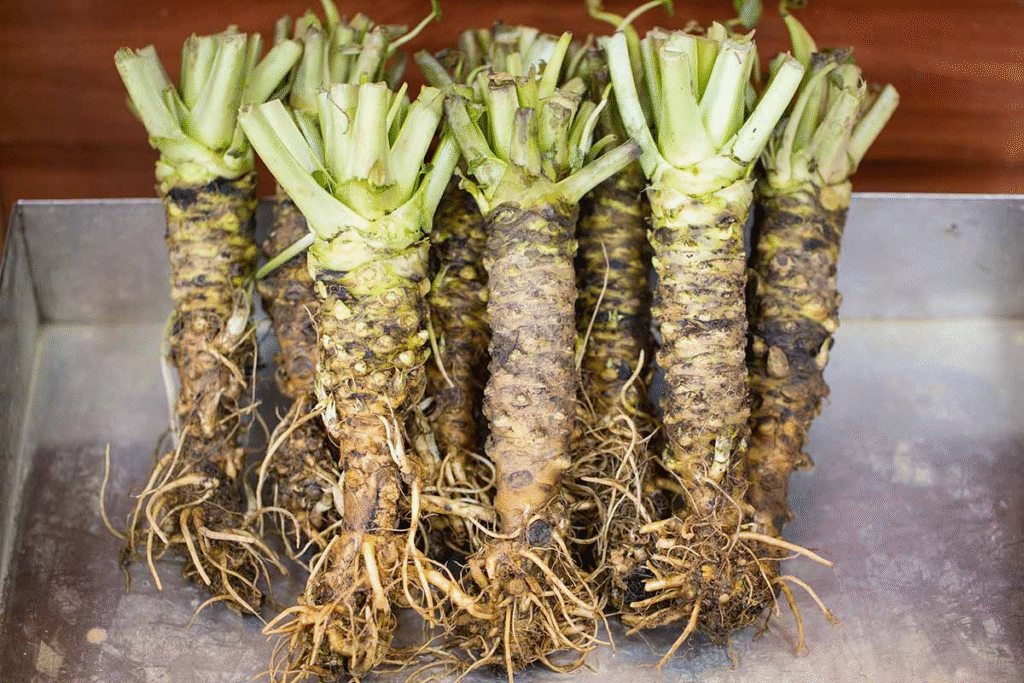
Seed Sourcing and Germination
- Purchase fresh seeds from reputable suppliers (seeds lose viability quickly)
- Soak seeds in cool water for 24 hours before planting
- Plant seeds 1/4 inch deep in a moist seed-starting mix
- Keep temperature between 55-65°F (13-18°C)
- Maintain consistent moisture with a spray bottle
- Expect germination in 20-30 days (germination rates are typically low)
Caring for Seedlings
- Keep seedlings in bright, indirect light
- Maintain high humidity with a clear cover or plastic bag
- Transplant when seedlings have 2-3 true leaves
- Handle carefully as young wasabi plants are delicate
Common Problems and Solutions
Growing wasabi comes with specific challenges:
Pests and Diseases
- Slugs and snails: Use organic slug bait, copper tape, or beer traps
- Aphids: Spray with insecticidal soap or neem oil
- Root rot: Improve drainage and avoid overwatering
- Leaf spot: Remove affected leaves and improve air circulation
Environmental Issues
- Heat stress: Symptoms include wilting and yellowing leaves. Move to a cooler location and increase misting.
- Cold damage: Protect plants when temperatures approach freezing with covers or by moving containers.
- Poor growth: Often related to insufficient moisture or nutrients. Check growing conditions and fertilize lightly.
Harvesting and Using Your Wasabi
The most rewarding part of growing wasabi is the harvest, which typically comes 18-24 months after planting.
When and How to Harvest
- Wasabi is ready when the rhizome is 4-6 inches long and 1-2 inches in diameter
- Carefully dig around the plant and lift the entire rhizome
- Cut off the rhizome, leaving any offshoots with the crown if you wish to replant
- Clean the rhizome by gently brushing off soil and trimming small roots
Proper Storage
- Fresh wasabi rhizomes can be stored in the refrigerator, wrapped in damp paper towels, for 2-4 weeks
- For longer storage, grate and freeze wasabi in small portions
- The leaves are also edible and can be used in salads or as a garnish
Traditional Preparation
For authentic wasabi paste:
- Use a sharkskin grater (oroshigane) or fine microplane
- Grate in a circular motion just before serving
- Allow to rest 5-10 minutes after grating for flavors to develop
- Use within 15-20 minutes, as the flavor compounds dissipate quickly
Culinary Uses Beyond Sushi
- Add to salad dressings for a spicy kick
- Mix into mashed potatoes or deviled eggs
- Incorporate into compound butter for steaks
- Use as a condiment for grilled meats and fish
- Add to homemade mayonnaise for a flavorful spread
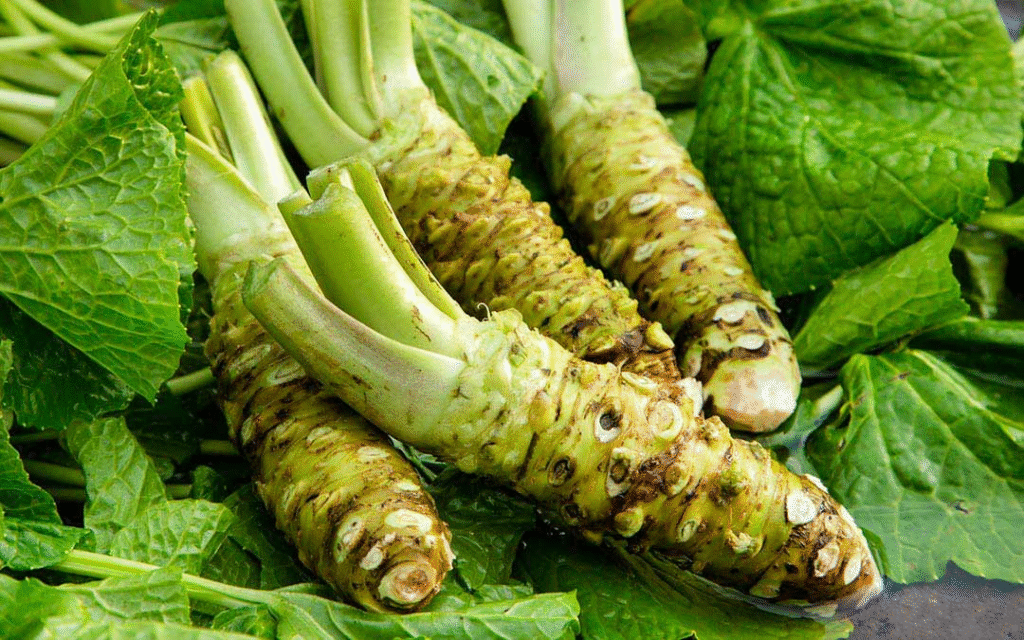
The US Wasabi Market
Growing wasabi can be more than a hobby—it can be profitable. The US market for authentic wasabi is growing as American palates become more sophisticated and demand for authentic Japanese ingredients increases.
Market Opportunities
- Fresh wasabi rhizomes can sell for $100-200 per pound to high-end restaurants
- Wasabi plants can be sold to other gardeners and enthusiasts
- Value-added products like wasabi powder or preserved wasabi have extended shelf life
- Local farmers’ markets and specialty food stores may be interested in locally-grown wasabi
Commercial Considerations
If you’re considering growing wasabi commercially, consult the USDA Small Farms Program for guidance on specialty crop production. Wasabi farming requires significant investment in infrastructure but can be highly profitable given the limited supply and high demand in the US.
Conclusion
Growing wasabi at home is challenging but ultimately rewarding. With patience and attention to its specific needs, you can produce this rare culinary treasure in your own garden or home. Not only will you have access to authentic wasabi flavor that few Americans ever experience, but you’ll gain the satisfaction of successfully cultivating one of the world’s most demanding culinary herbs.
Whether you’re growing wasabi in a garden stream, containers on a shaded porch, or in a specially designed indoor setup, the key is to replicate its native mountain stream environment as closely as possible. With the right conditions and care, your wasabi plants will thrive, providing you with a unique ingredient that will elevate your culinary creations.
Remember that the journey of growing wasabi is as rewarding as the harvest itself—embrace the process, learn from challenges, and enjoy the connection to this ancient Japanese culinary tradition.
